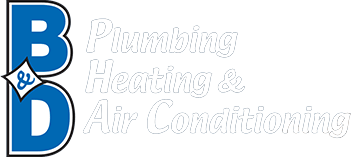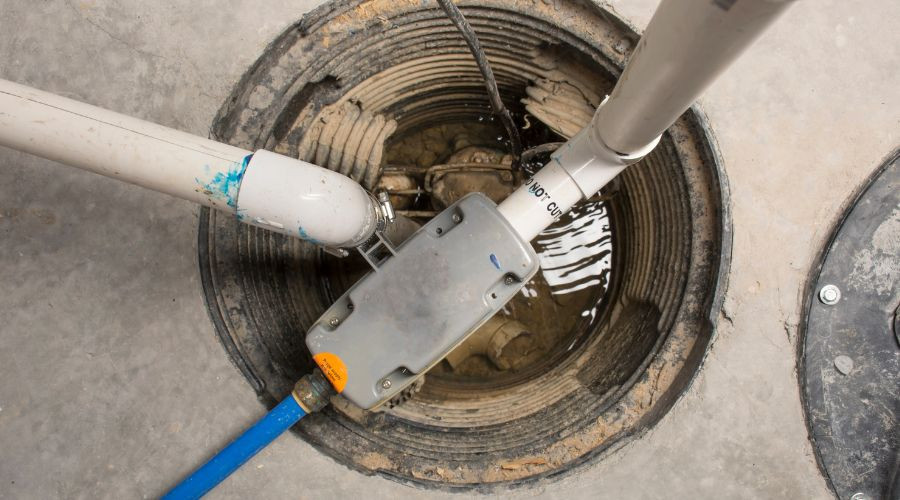Expert plumbers in St. Michael, MN, discuss how a sump pump works and its benefits
St. Michael, United States - March 26, 2025 / B & D Plumbing, Heating & A/C /
What Is a Sump Pump?
A sump pump is designed to prevent basement flooding by removing excess water from a designated area, typically a sump pit in the lowest part of the basement. When water accumulates, the sump pump activates, pumping the water safely away from the home's foundation to prevent damage. This essential tool is crucial for minimizing the risk of water damage, especially during heavy rains or rising groundwater. This blog explores how sump pumps work and why they are vital for protecting the home from flooding.
Benefits of Sump Pumps
 Sump pumps are a crucial component in the fight against water damage in homes, particularly for those with basements or at risk of flooding. By actively removing water that accumulates in a designated sump pit, these pumps provide significant advantages. Here are the key benefits of installing a sump pump:
Sump pumps are a crucial component in the fight against water damage in homes, particularly for those with basements or at risk of flooding. By actively removing water that accumulates in a designated sump pit, these pumps provide significant advantages. Here are the key benefits of installing a sump pump:
- Flood Prevention: The primary function of a sump pump is to prevent flooding by pumping excess water out of basements and away from a home's foundation. This is especially beneficial during heavy rainfalls or when snow melts rapidly, significantly reducing the risk of water damage.
- Foundation Protection: Water accumulation around a home’s foundation can lead to cracks, weakening the property's structural integrity. Sump pumps help maintain the foundation's strength and durability by efficiently redirecting water.
- Mold and Mildew Reduction: Persistent moisture and flooding can create an ideal environment for mold and mildew growth, which pose health risks and can damage personal belongings. Sump pumps minimize the moisture level in basements, reducing the likelihood of mold development and promoting healthier indoor air quality.
- Property Value Maintenance: Homes with effective flood prevention mechanisms like sump pumps are generally more attractive to potential buyers. A functioning sump pump can be a selling point, indicating proactive maintenance and care to prevent water-related issues.
- Peace of Mind: Knowing that a sump pump is in place provides homeowners peace of mind, especially during extreme weather conditions. This assurance allows homeowners to focus on other aspects of home management without worrying about unexpected water intrusion.
- Insurance Benefits: Some insurance providers offer discounts for homes equipped with sump pumps. Homeowners might enjoy lower premiums by reducing the risk of water damage claims, contributing to further cost savings.
In summary, installing a sump pump is a smart investment for protecting a home against water damage. This device not only safeguards the physical structure but also enhances the overall safety, comfort, and value of the property.
Primary Types of Sump Pumps
When it comes to choosing a sump pump for the home, understanding the two primary types—submersible and pedestal—is essential for making an informed decision. Each type has its own advantages and drawbacks.
Submersible Sump Pumps:
Pros:
- Powerful Performance: Submersible sump pumps are typically more powerful than their pedestal counterparts, allowing them to handle larger volumes of water more efficiently. This makes them ideal for areas prone to heavy flooding or high water intrusion.
- Quieter Operation: Since submersible pumps are placed inside the sump pit and underwater, they tend to operate more quietly, reducing noise disruption in the home.
- Space Efficiency: Being submerged in the pit, these pumps do not take up additional space, which can be beneficial for smaller basements.
Cons:
- Higher Initial Cost: Submersible pumps are generally more expensive than pedestal pumps, both in terms of initial purchase price and installation.
- Shorter Lifespan: Constant exposure to water may result in a shorter lifespan compared to pedestal pumps, although regular maintenance can mitigate this.
Pedestal Sump Pumps:
Pros:
- Cost-Effective: Pedestal sump pumps tend to be more budget-friendly, both in purchase and installation, making them an attractive option for those with tighter budgets.
- Longer Lifespan: Positioned above the sump pit, pedestal pumps are less exposed to moisture and, therefore, can often last longer than submersible models.
- Easy Maintenance: With the motor above the pit, pedestal pumps are generally easier to access for maintenance or repairs, which can be convenient for homeowners.
Cons:
- Less Power: Pedestal pumps may not be as powerful as submersible pumps, making them less ideal for areas with heavy flooding or large volumes of water to manage.
- Increased Noise Levels: Since the motor is located above the pit, pedestal pumps tend to be noisier, which can be a consideration depending on the location and usage of the basement.
Choosing between a submersible and a pedestal sump pump depends on homeowners’ specific flood risk, budget, and preference for power versus longevity and maintenance. By weighing these pros and cons, homeowners can select the most appropriate sump pump type to protect their property from water damage effectively.
Secondary or Backup Sump Pumps
 While primary sump pumps are essential for safeguarding your home against flooding, secondary or backup sump pumps provide extra protection, ensuring your property remains dry even under challenging circumstances.
While primary sump pumps are essential for safeguarding your home against flooding, secondary or backup sump pumps provide extra protection, ensuring your property remains dry even under challenging circumstances.
Here’s why having a backup pump can be crucial:
- Power Outages: During severe storms, power outages are common, rendering electric sump pumps inoperable when needed most. Battery-operated backup pumps can activate automatically during these periods, ensuring continuous water removal even when the home's power supply is disrupted.
- Primary Pump Failure: Like any mechanical system, primary sump pumps can occasionally fail due to malfunctions, wear and tear, or unforeseen issues. A backup sump pump is a critical safety net, taking over if the primary pump cannot perform its job. This provides peace of mind and security against water damage.
- Excessive Water Volume: In instances of extreme flooding or when water inflow exceeds the capacity of the primary pump, a secondary pump can help manage the excess water, ensuring that the system keeps up with the demands placed on it. This is particularly relevant for homes in flood-prone areas or those with basements that are highly susceptible to water accumulation.
- Constant Monitoring: Many backup systems come with alarms that notify homeowners of issues with the primary pump or if the backup system has been activated. This added feature gives homeowners real-time alerts, enabling them to respond quickly to potential problems.
- Investment Protection: With the costs associated with water damage repairs and property value depreciation due to flooding incidents, investing in a secondary sump pump is a preventive measure that can save money in the long run. It helps ensure the continued protection of a home’s structural integrity and personal belongings.
Incorporating a backup or secondary sump pump into your flood prevention strategy provides a comprehensive defense against basement flooding. Whether due to power outages, primary pump failures, or extreme weather conditions, having a reliable backup enhances your home's resilience against water damage.
About B & D Plumbing, Heating & A/C
B & D Plumbing, Heating & A/C has a long history of providing quality plumbing, heating, and cooling services since 1982. They are members of the I-94 West Chamber of Commerce and other local chambers. Contact them for sump pump installation services in St. Michael, MN.

Contact Information:
B & D Plumbing, Heating & A/C
4145 MacKenzie Ct NE
St. Michael, MN 55376
United States
Tracy Daleiden
(763) 497-2290
https://www.bdplumbers.com/
Original Source: https://www.bdplumbers.com/press-releases


